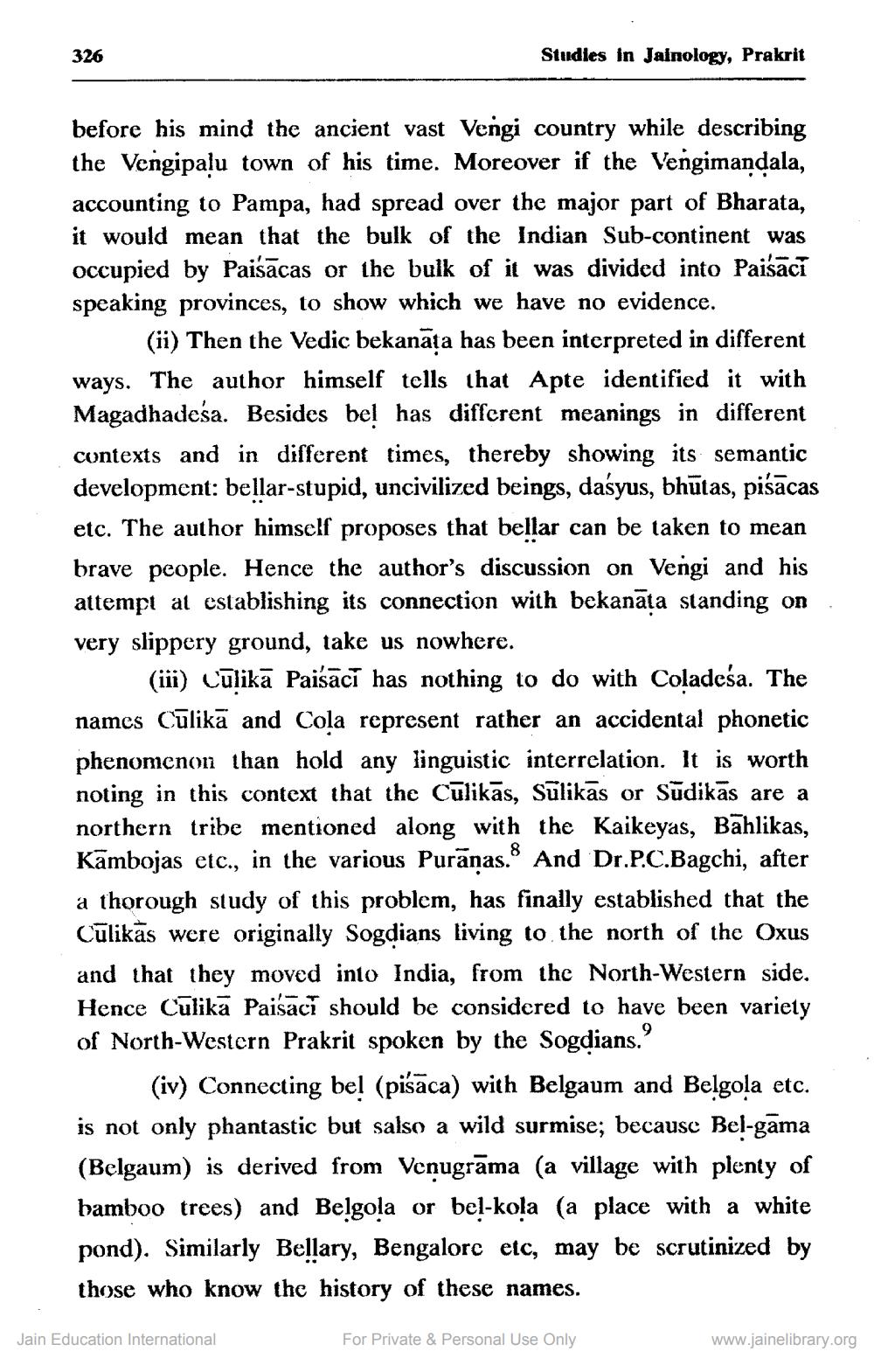________________
326
Studies in Jalnology, Prakrit
before his mind the ancient vast Vengi country while describing the Vengipalu town of his time. Moreover if the Vengimandala, accounting to Pampa, had spread over the major part of Bharata, it would mean that the bulk of the Indian Sub-continent was occupied by Paisācas or the bulk of it was divided into Paisaci speaking provinces, to show which we have no evidence.
(ii) Then the Vedic bekanāța has been interpreted in different ways. The author himself tells that Apte identified it with Magadhadesa. Besides be! has different meanings in different contexts and in different times, thereby showing its semantic development: bellar-stupid, uncivilized beings, daśyus, bhūtas, pišācas etc. The author himself proposes that bellar can be taken to mean brave people. Hence the author's discussion on Vengi and his attempt at establishing its connection with bekanāta standing on very slippery ground, take us nowhere.
(iii) Cūlikā Paisací has nothing to do with Coladeśa. The names Cūlikā and Cola represent rather an accidental phonetic phenomenon than hold any linguistic interrelation. It is worth noting in this context that the Cūlikās, Sūlikās or Sūdikās are a northern tribe mentioned along with the Kaikeyas, Bāhlikas, Kambojas etc., in the various Purānas.” And Dr.P.C.Bagchi, after a thorough study of this problem, has finally established that the Cūlikās were originally Sogdians living to the north of the Oxus and that they moved into India, from the North-Western side. Hence Cūlikā Paisací should be considered to have been variety of North-Western Prakrit spoken by the Sogdians.
(iv) Connecting be! (pišāca) with Belgaum and Belgola etc. is not only phantastic but salso a wild surmise; because Bel-gama (Belgaum) is derived from Venugrāma (a village with plenty of bamboo trees) and Belgola or bel-kola (a place with a white pond). Similarly Bellary, Bengalorc etc, may be scrutinized by those who know the history of these names.
Jain Education International
For Private & Personal Use Only
www.jainelibrary.org




